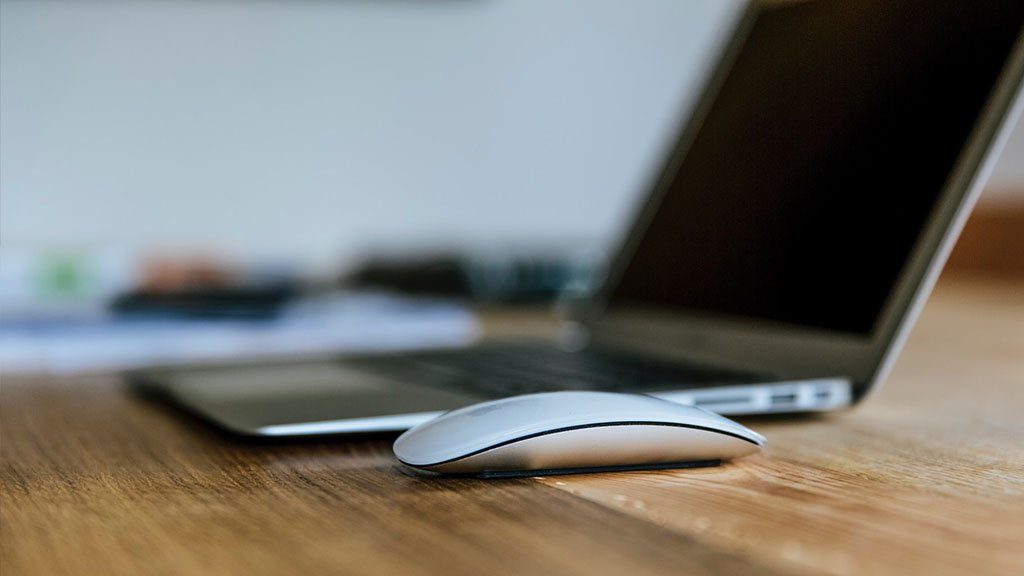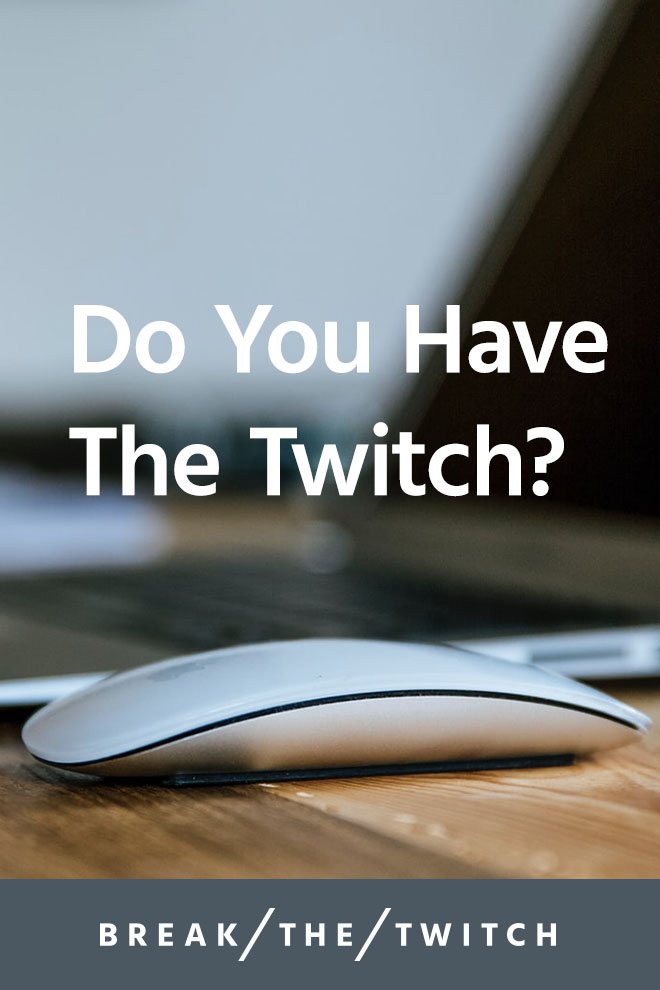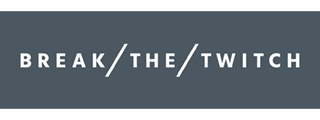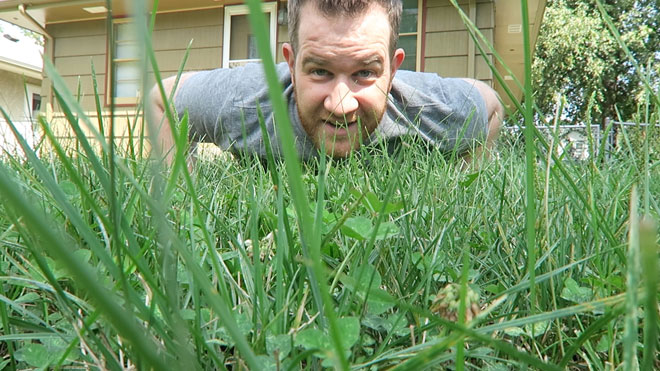
In early 2014, something happened at work that ended up changing my life forever. In fact, it changed your life forever too because if it hadn’t happened, Break the Twitch wouldn’t be here for you to read. And it’s all because my coworker walked into my office and interrupted me.
The day started out innocently enough. I was working as the Marketing Director at a nonprofit, typing up a blog post with the latest news in the bike-share world. Mid-keystroke, I heard a knock at my office door so I lifted my hands from the keyboard and looked over.
After a short conversation with my coworker, I looked back at my computer screen and couldn’t believe what I saw.
At the end of a half-written sentence, I had typed the word, “facebook.”
What. The. Heck.
During that interruption and mid-keystroke, my brain seemed to have short-circuited.
It was in that oddly shame-inducing moment when I learned I did not in fact own my attention. So if I didn’t own it, who did?
I realized my frequent one-click purchase pattern I had recognized months earlier was not an isolated spending problem, but an intention and an attention problem. I began to see many small daily actions I was doing were more impulsive Twitches than intentional actions.
Since starting this blog and intentionally exploring the impact of my small daily actions, the Twitch has shown up in places I never expected. I even wrote a book about it, learned even more about the Twitch, and incorporated the learnings into this book and audiobook. As my exploration continued, my philosophy on how to break the Twitch evolved along with it.
Defining The Twitch
an impulsive, unproductive, repeated response to a feeling of discomfort
“I’m feeling the Twitch right now, I keep checking my phone for no reason.”
The different scenarios that cause the Twitch will vary greatly, but they all have one thing in common. We feel a certain type of discomfort, (called suffering in Buddhism) and there is an impulsive, unproductive solution that doesn’t necessarily solve but eases that discomfort. The Twitch isn’t a one-time occurrence, it’s a pattern that we repeat when we encounter the discomfort over and over again.
There are many types of this discomfort, but a few examples are:
- Desire → Twitch → Purchase
- Wanting to improve ourselves, purchasing something instead of taking action.
- Frustration → Twitch → Distraction
- Getting stuck on a writing assignment, intermittently checking Twitter and Facebook.
- Boredom → Twitch → Smartphone
- Seeking distraction, avoiding being alone with our thoughts.
While these are just a few examples of the various discomforts and Twitches that we employ to ease them, there are many more. Read about the four most common Twitches that affect many of us.
Now that you’re familiar with the Twitch itself, here’s what we can do to help break the Twitch and more fully own our attention and lives.
1 / Build Awareness of the Twitch
Your attention is being manipulated, and you might not even realize it. I sure didn’t until that fateful day when my coworker interrupted me in my office.
Start by slowing down and observing your actions, especially during moments that may be uncomfortable or prone to distractions. Situations like when you’re working through an ambiguous or difficult task or the in-between moments in social situations. Or when you’re feeling bored, impatient or rushed. Which one of the four common Twitches that steal your attention do you have?
If you’re on the computer all day like me, using a time tracker like this can be really helpful in knowing where all your time goes. You can also go to your browser history to keep track of how many times you’re getting distracted during your work. Or try this intentional living values exercise for greater clarity on where things stand currently.
You don’t have to change anything yet—just notice. Feel the discomfort when you get the urge to pull out your phone again and acknowledge it. You can say, “Hey Twitch, I see you there.”
It’s fine if you still decide to go through with the Twitch, but don’t beat yourself up. Just acknowledge it and start becoming more aware of how your attention moves throughout the day.
2 / Minimize Distractions
To change our lives in a meaningful way, we must create space to allow it to happen. Developing a greater awareness of the Twitch is more difficult with a distracted mind, a cluttered home, and a jam-packed schedule. Even if you’re not exactly sure what you do want in your life, begin by removing everything that you don’t.
In order to minimize clutter, it’s important to note that clutter takes on many forms. Consider the following:
- Impulse purchases that don’t align with your values or desired lifestyle.
- Mental distractions caused by 38 quick social media checks throughout the day.
- Physical clutter lying around the home that takes recurring time and energy to organize and clean.
- Mobile notifications that pull you away from your creative process, causing a loss of focus.
- Over-stuffed garages that could be a workspace for a passion project, or even parking space for a car (imagine that).
Another idea is to create intentional friction around distractions that are more difficult to remove completely from your environment. Intentional friction is adding more difficulty around an easy action you want to do less of, so you have more space to make a conscious choice.
Work on identifying and minimizing the distractions that pull us away from the things that really matter to us. We have limited time and energy each day; decluttering our lives allows us to use those resources more effectively.
You may be interested in an overview of minimalism with definitions, benefits, strategies, and real-life examples.
3 / Build Habits That Align With Your Values
Once space is created by reducing the distractions and clutter in our lives, we must utilize some of it for small daily practices of good habits. Without a focus on taking small actions towards desired goals, other new unproductive tendencies will replace the clutter in the space we’ve created. Even worse, the same bad habits will return to consume our time again. As Annie Dillard says, “How we spend our days is, of course, how we spend our lives.”
The small things we do each day compile over the years to become what we spend our lives on. With this in mind, we should focus on implementing the actions that align with the lifestyle we desire. Some examples of these habits might be:
- Reading 20 pages of an interesting book every day.
- Spending 1 on 1 time with a spouse, child, or friend for 15 or more minutes every day.
- Doing 20 push-ups every day and increasing by one or two each week.
- Writing 500 words per day in a creative journal or on a blog to share your ideas with the world.
- Meditating or sitting in stillness for a few minutes every morning for reflection and gratitude.
When it comes to choosing what habits to build, consider these 10 habit guidelines for sustainable and effective habits. Your chosen actions might be similar to the ones above or completely different, but regardless they should reflect the way you want to be spending your life.
If you can imagine spending a day doing exactly what you want to do, what are the small habits that would make up that day? Instead of thinking about the things you dream of having, visualize a day spent in the life that you desire. Identify the actions that can be done now and those that will help build up to that lifestyle.
Lastly, getting accountability and support other people with similar goals is important when you’re making changes to your life. Ready to take action with secret member-only content and resources? Join Attention Collective, our online community of like-minded humans from around the world, and get full access immediately. See you inside!
Monthly Email Newsletter
Subscribe to get exclusive intentional living content directly to your inbox.
4 / Be Open to the Possibilities
As we declutter our lives, new possibilities emerge within the space that is created. Once we focus on breaking the twitches in our lives while building daily habits that matter to us, what’s next? That’s where creating opportunities for a better life comes in.
Identify things you’re passionate about and find ways to teach others what you know. Over time, this will give you a platform to connect with other creators and help people along the way. These opportunities can create additional income with a side-hustle business that eventually allows for location independence or whatever big lifestyle goals you may have. What really matters is simply doing more of what you love and increasing your return on invested time. Some examples of ways to create opportunities are:
- Starting a blog to articulate your own ideas and share your perspective with others.
- Making videos for YouTube that have the potential to create additional income.
- Starting a podcast to connect with others and share ideas.
- Going to meetups and connecting with other people with similar passions.
While the category may be broad, it all falls into the spectrum of creating various opportunities to improve your lifestyle beyond what would otherwise be possible. Starting Break the Twitch has been one of the best things I’ve ever done for my own intentional living journey. It has allowed me to connect with incredible people and establish a platform to share ideas beyond my physical self. If the site exploded and disappeared, I’d start it all over again today.
Starting now: Assume the title of Entrepreneur and start thinking about ways that you can create opportunities to extend beyond the first two steps of minimizing clutter and building habits. It may be something you love making or perhaps a skill you have that you can share with others. Grab your smart phone and upload a video to YouTube, you never know what connections and benefits may come of it.
Start today, using what you already have to break the twitch.
The absolute best way to make any fundamental shift in life is to simply take action using the resources available. No course will do the work, and new running shoes won’t put one foot in front of the other. It’s the small consistent steps in the right direction that will move us to where we want to be. With that in mind, employing the above philosophy should help in making meaningful progress towards that ideal day we truly want.





